Expert Q&A: Dr. Leann Andrews
By Amy Nelson
Leann Andrews is a licensed landscape architect with a PhD in the built environment, graduate studies in global health, and a professional background in ecological restoration and green infrastructure design. She is currently a Director at the design activism non-profit Traction, Affiliate Assistant Professor at the University of Washington (UW) and Penn State University (PSU), and affiliated with the UW Green Futures Research and Design Lab and PSU’s E+D (ecology plus design). Andrews leads landscape design and research projects in the US and Peru and assesses their impacts on human and ecological health using One Health and Planetary Health frameworks.
What role do you believe biodiversity plays in human health?
Biodiversity increases the performance of a landscape through the ecosystem services that a healthy environment provides, including the mitigation of disease. It is often used as an indicator that something either positive or negative is going on in that environment.
What is the One Health framework, and how does it differ from the Planetary Health framework? How can these approaches be applied to ecological restoration, conservation, and regenerative design?
One Health is the idea that the health of humans, animals, and the environment we all share are linked. The term often refers to the transmittal of zoonotic diseases between animals and humans, but its definition is expanding to include all aspects of health and well-being. It’s one of a few frameworks that can help expand the work of landscape architects, restoration ecologists, and others to incorporate a public health lens.
Planetary Health is a broader framework that includes the connection of the globe. It factors in things like climate change. It’s a different perspective that incorporates these larger systems versus this smaller, often microbial transmission of disease. There’s also another framework called Ecohealth that is often used. Ecohealth recognizes the role of biodiversity in health equity in that “health and wellbeing cannot be sustained in a resource depleted, polluted and socially unstable planet” (Lerner & Berg 2017), But these frameworks can all work together.
It is helpful to have frameworks. They help you and your firms educate and market to your clients and provide clarity and goals to your work. Funding sources are often tied to frameworks. In restoration ecology and ecological design especially, they also can open doors for practitioners across disciplines that don’t typically work together to collaborate.
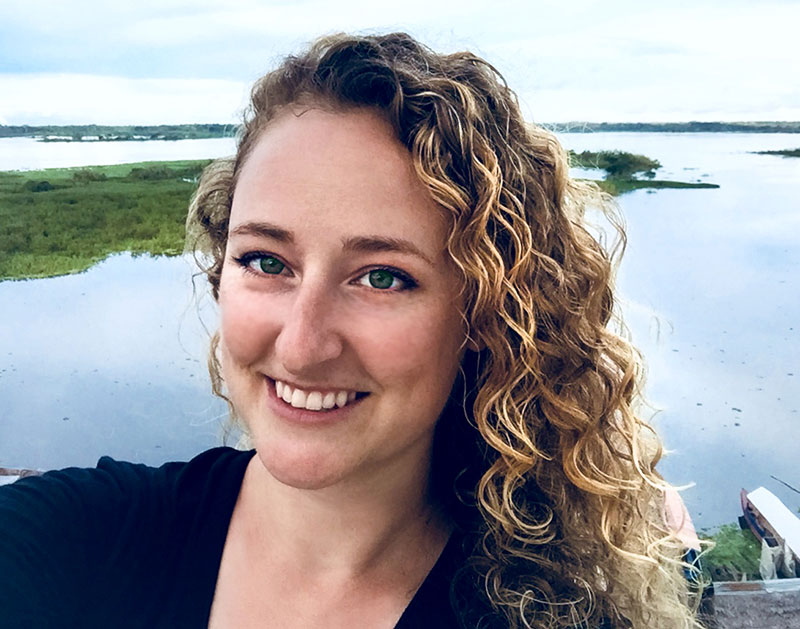
Many Leaf Litter readers do consider public health in their work, but this may be more in terms of air and water quality, climate change resilience, food security, and equitable access to open space. They may not be thinking about the spread of zoonotic diseases. How can that particular public health lens be applied to their work? How could it inform a forest management plan, an ecological restoration project, or an urban planning initiative?
As we get smarter as a population, we start layering more information into our work. For example, when we became aware of how stormwater and public health were linked, we started layering that into our work. [Disease prevention] is one more layer we can add and be more mindful of.
Folks working in restoration ecology already know this stuff. They know that a healthy ecosystem is necessary to meet your wetland requirements, your stream mitigation aspects, or protection of a sensitive species. But we are now learning how biodiversity loss, habitat destruction and urbanization are playing a part in zoonotic disease risk by increasing the chances of human-animal encounters, squeezing animals that do not typically come across each other in the same small space, and eliminating predators who could potentially be eating those who harbor disease (for example reducing the habitat of owls that could be eating Lyme disease causing mice). Understanding this additional layer helps explain how ecology-based projects are related to human health.
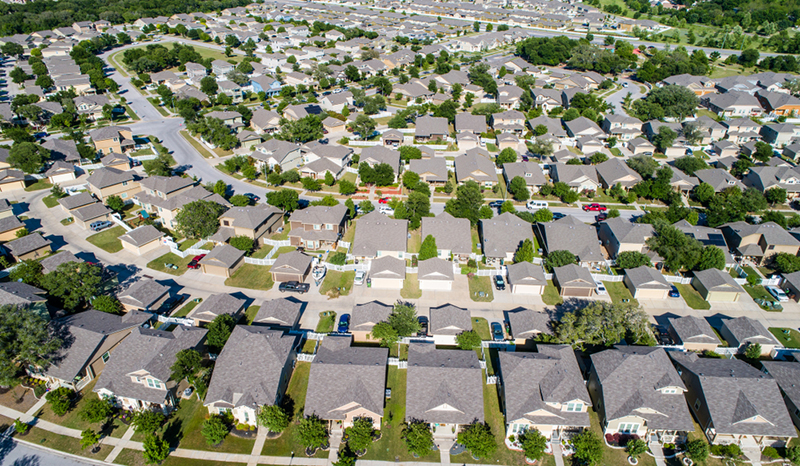
In addition, public health, including zoonotic disease risk, is something that doesn’t stay in one location, attached to one project or site. The public health impact of an individual project or landscape intervention can be much broader than the immediate site, at a watershed, regional or—we are now learning—even a global scale. There is a new awareness of linkages between ecology, planning and zoonotic diseases, so new accountability needs to happen. Now that we have this new information, we should use it.
How do we do that? Where can we find the information to inform our work?
We can’t possibly know all of this stuff all by ourselves, but there are epidemiologists, zoologists, and veterinarians who have been working on this topic their entire lives. It’s really about collaborating with and learning from these professionals and adding in that design component so that you can create solutions and prevent problems from happening.
Are you saying that the best way to add the zoonotic disease prevention layer to our work is to reach out to specialists and include them on our project teams?
In landscape architecture, we’re used to hiring specialists. If we come across a cultural artifact and we have no idea what it is, we’re going to hire an anthropologist or historian to help us identify it and figure out what we’re supposed to do about it. Then we layer that information in. Biologists help us identify sensitive species and understand what to do when we find them. They help us answer questions like, “How do I protect this species? Am I allowed to proceed with my project?” Perhaps you find contamination on your site. You may not know how to deal with that, but you can consult with somebody who does, and then you can move through that process. There are experts across all disciplines; you just have to find them.
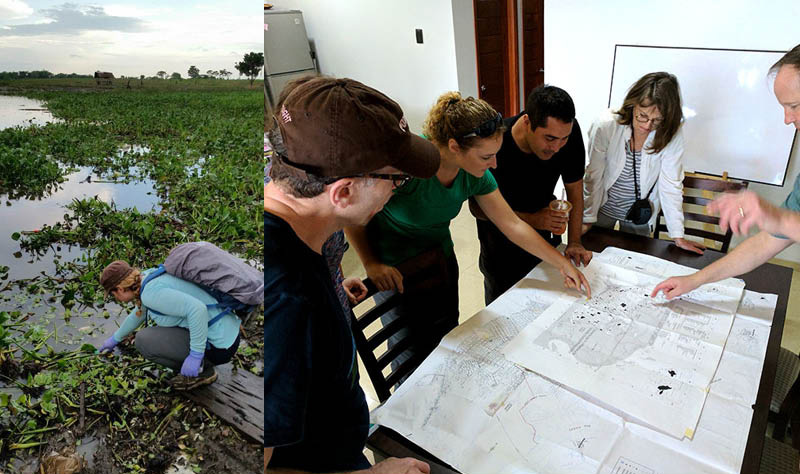
It is also important to be mindful of this lens when working on projects in urban settings or on projects that specify products. Say you are putting a bench in a park. You should be asking, “Where does the wood come from? Is it causing harm? Is it promoting social inequity somewhere else and causing people to go out and do desperate things to find food sources? Is it causing a company to benefit in a way that they now can continue destroying a forest?” But [consideration of disease prevention then] adds the intentionality of, “This could potentially impact my health or the health of others” in a much larger way than we realized before.
Do you think that the current pandemic (and this new layer of information) will be a game changer for conservation and perhaps for the consideration of materials in the building industry?
I really hope that we use this as an opportunity. It is so rare to have this global stop. You don’t get to live anywhere where this pandemic is not impacting you, and it relates to literally everything in our lives. What we’re actually seeing is this brief pause, and it’s a huge wakeup call. In Lima, Peru, you can currently see the Andes Mountains, which are usually blocked by air pollution. We are seeing rare aquatic life in the canals in Italy. All of these different animals are getting a little bit of breathing space, and we’re there to observe it, which I think is an excellent opportunity to understand our impact a bit more.
It can be easy to just “get points” on different types of sustainability checklists, and there are ways that people can kind of slide around them. I’m hoping that this [awareness of the connection between habitat degradation and human health] helps people not slide around to, say, get the points of a green building certification system, but to really, truly think about the impact that their decision might have on human and ecological health.
It’s very difficult to understand how interconnected we all are to our world. It’s very complex, and no one person trained in one area could possibly understand it. But while we see the world pause for just a moment, we have time to put those pieces together. We have proven over many, many years that we can adapt as a human species by having moments like this, where we collectively pause and have a greater realization. I hope that this impactful moment in time, at the very least, allows people and professionals to start having more direct conversations, stances, and goals on the materials and strategies used to complete a project.
Have you been involved in any projects where disease hosts or vectors are factored into a design approach in a way that supported habitat preservation and biodiversity? And did you bring in a disease ecologist or an epidemiologist?
I co-direct a program with my colleague, Coco Alarcón, a Peruvian landscape architect. We partner with an informal slum community in Iquitos, Peru that has extreme human health problems caused by poverty and environmental conditions. They live on the edge of the city and the edge of the Amazon Rainforest, so they live in between massive urban and ecological forces, in a space that’s rich with animals and plants. We’ve been looking at different types of projects that promote biodiversity and other aspects of human health.
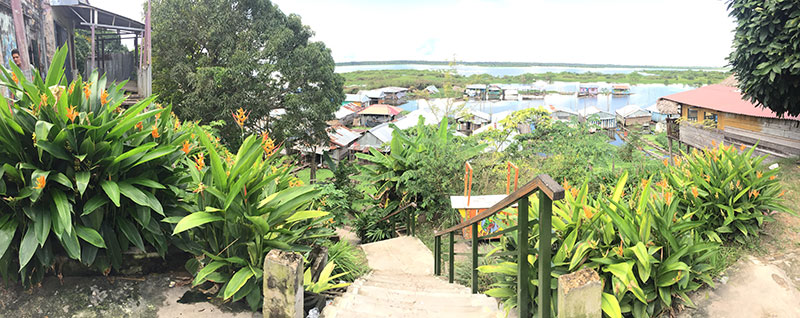
Every year, we put in what we call a “design intervention,” and then we measure how the health of the community and the health of the plants and the animals change over time. We’ve done a waterfront park that included stairs, which reduced injuries as well as cuts and scrapes, which are opportunities for parasitic infection. The park includes many different native plants that have medicinal plant properties that can treat gastrointestinal illnesses. We also created 50 small household floating gardens.
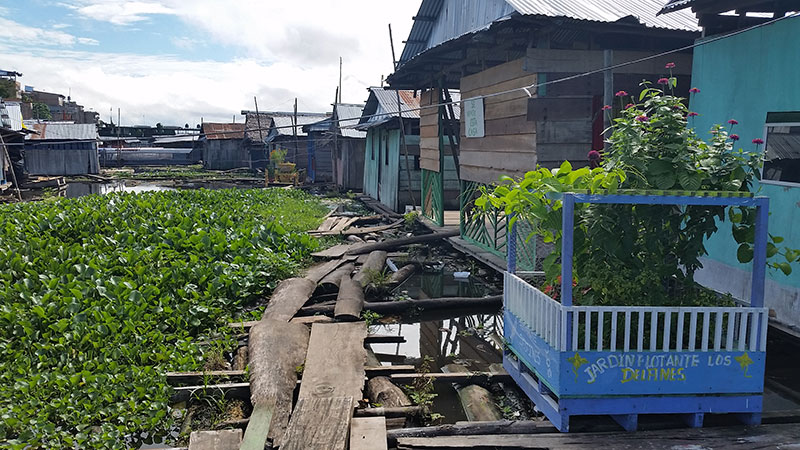
We started building a relationship with the community in 2015 and began interventions in 2016. It’s a longitudinal study, and we are not finished. We’ve seen some interesting improvements in the gut microbiome of people who have access to the waterfront park. The plants also provide habitat for mosquito eaters, like birds, amphibians, and reptiles. In our pilot study, we saw an increase—almost two dozen new species of birds and butterflies, which help to continue driving the plants to produce more and then support more animals.
The gardens are also showing promising improvements in food security. If you can get your food from your immediate location, you don’t have to travel into the jungle. You don’t have to tear something down or expose yourself to animals you wouldn’t already have had exposure to. You wouldn’t expose yourself to malarial mosquitoes, for example. Biodiversity also helps to regulate that exposure. It is really fascinating how it’s all interconnected. We’re finally starting to piece these disparate layers together.
What type of impact do you think these interventions are having on community connectedness and well-being?
The scientific community has 30 to 40 years of studies that link access to nature to increased well-being so our team is currently measuring aspects of mental health, connections to nature and community well-being. We have been measuring depression and anxiety and seeing positive improvements over the years. [Note: this work is not yet published.]
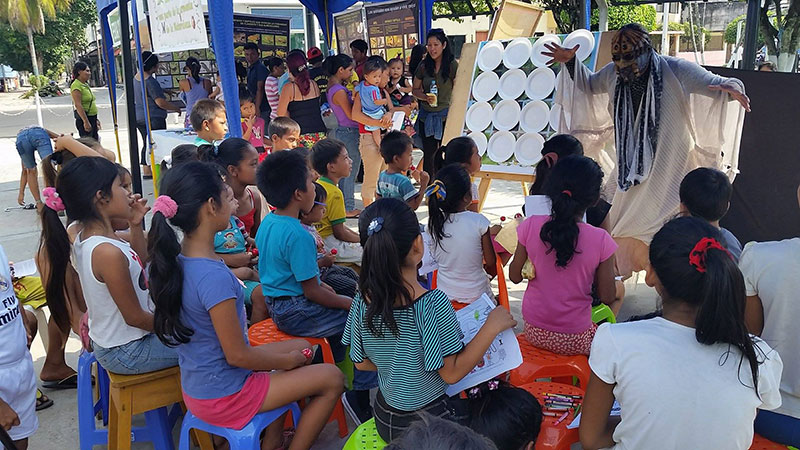
The community has stated that having a garden at your house offers hope, relaxation, peace, and identity—a sense of place. As landscape architects, we consider things like sense of place in our work, and it really does have a direct impact on our health. We also know that anxiety is linked to immune support mechanisms such as the gut microbiome, so reducing anxiety by implementing a garden may help increase the immune system’s ability to fight off and recover from diseases such as COVID-19. You might not get sick for quite as long or sick at all, meaning you could continue to work and provide food for your family, continuing a healthy cycle.
How many years do you plan to continue that study?
We’re not entirely sure. This all has to do with this partnership that we have with this community. The moment they say, “No, we don’t want to do this anymore,” we will stop. My colleague, Coco, and I actually started out with several other colleagues working with a community in Lima Peru that is also an informal settlement. We worked with them for about six years, and over that time, they began improving their conditions without us there. We realized that there was a self-sustainment that happened, which was important to political and community cohesion. Once that self-sustaining momentum happened within the community, we gently stepped away. That’s the dream of every designer: you do your thing, you step away, and it has its own world. It’s really not about you changing things; it’s about the seed that you plant and how it grows. Those are the very values of stewardship and sustainability that we always hope for.
We have to pay very close attention to make sure that we’re not fatiguing the communities that we work with. It must be an equal partnership. We are very up front with them. We say, “We’re getting as much out of this as you are. This is not a charity. We have a partnership.” We work together on this and we show them the results so that they understand, “Oh, this thing does have an impact on my health, and I understand now that the environment is linked to it.” It is a very open dialog that has to be continually nurtured.
Were these communities in Peru involved in the design of the interventions you implemented?
Absolutely. We use participatory methods that are often used in design activism through pretty much every aspect of the project. We started with community workshops where we asked them about their needs, desires, and hopes for their community. Those then became priorities. We didn’t come in, and say, “Hey, we’re going to do a project based on this.” We said, “What do you want, and what do you think you need?”
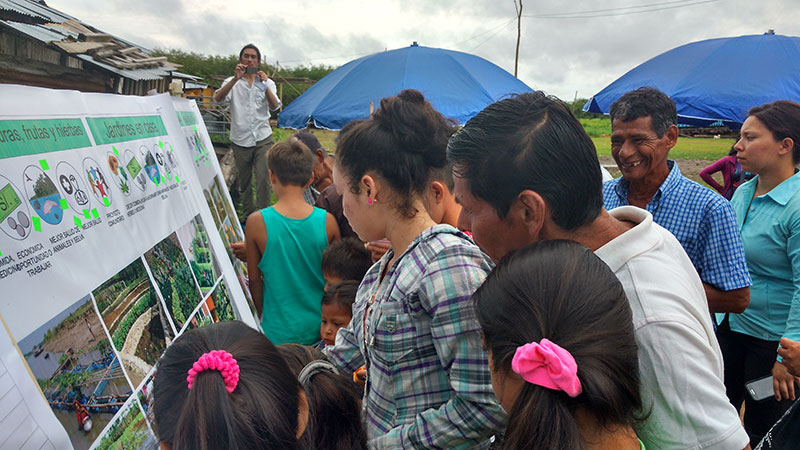
This is an incredibly intuitive population. They might not know all of the science aspects, but they know a lot about their health, because it impacts their life very intimately. You pretty much never have to explain things like climate change to people who live with the land. They just understand.
My PhD dissertation was the pilot study of this Iquitos program. It shows the importance of trans-disciplinary action research frameworks. Change isn’t just the physical thing you put in; it’s also the people that you involve. Having participatory methods where you listen, and where people’s ideas get elevated in a way they were not previously has a huge impact on mental health and sustainability. When community members put their own efforts and ideas into a project alongside their family members, they become really proud of it. They take care of it. This is incredibly important to this whole picture of One Health or Planetary Health.
Many practitioners likely experience challenges related to the public perception of “pests.” For example, there may be concerns about mosquitoes with a stormwater management or wetland restoration project, or snakes with an urban stream restoration project. Do you worry that those challenges might intensify as awareness of zoonotic diseases spreads?
Public education has to be coupled with these types of projects, particularly in urban areas where we want people to connect more with nature. It’s a tricky balance because we want this awareness, but it often gets pulled in with fear.
Bats have a bad rap right now as potential vectors, but they are incredibly important for regulating mosquito populations. They also pollinate crops all over the world. They are some of the biggest economic helpers we’ve got in terms of agriculture, and there is no replacement for them. If you cut out all the bats in the world or decide that bat habitat is just too risky, you likely would have huge economic and health impacts… and we’d have a food shortage.
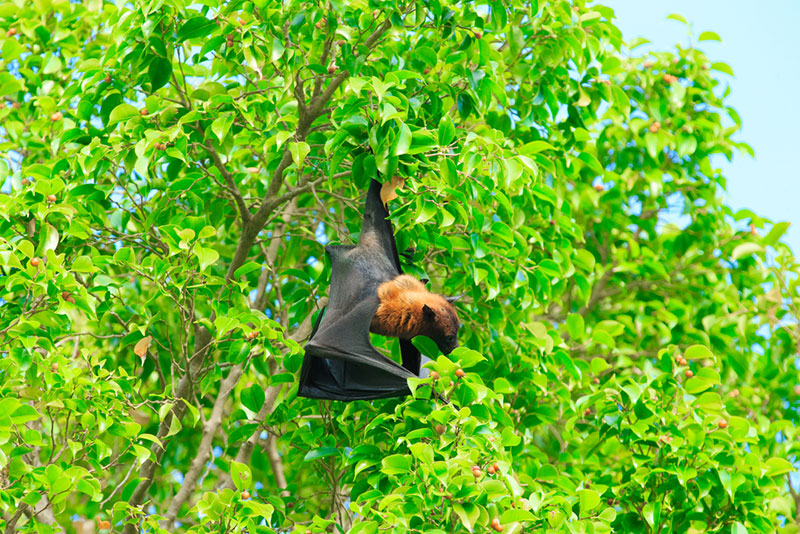
It is important to understand a source of disease so that we can try to prevent things in the future. But placing blame on any one population or species is not helpful, because we know that we’re all interconnected. One way to dispel the fear is to acknowledge the fear and create practical solutions that incorporate education and mitigate concerns. For instance, we have rain garden projects all over the United States now that are educating people about mosquitoes. As designers and engineers, we also have a whole suite of best practices for water management safety when it comes to mosquitos. There are different surfaces on which mosquitoes can lay their eggs, and standing water needs to be present for a certain amount of time for those eggs to hatch, so when you’re making a rain garden or a curb or something like that, you factor these in when you specify those products or calculate infiltration. Designing with intent and education can convert people’s fears into understanding.
With flying animals that may spread disease, like bats, it’s also about incorporating this biological understanding and interdisciplinary knowledge into design to create an interconnected solution, such as considering where bats typically go to the bathroom then making the decision to not put seating in that space. Another example, maybe don’t put snake habitat next to a playground. Again, this is another layer that gets incorporated into the design process. It is not going to be simple because we’re still learning, and we’re learning how to work with these other disciplines. But it’s definitely doable.
Do you think we will see the integration of disease ecology in university landscape architecture programs?
Absolutely. The interest is definitely there. It has always been there from the earliest days of the profession. Frederick Law Olmsted was actually once [the general secretary of the United States Sanitary Commission], and his work in Central Park specifically addressed public health.
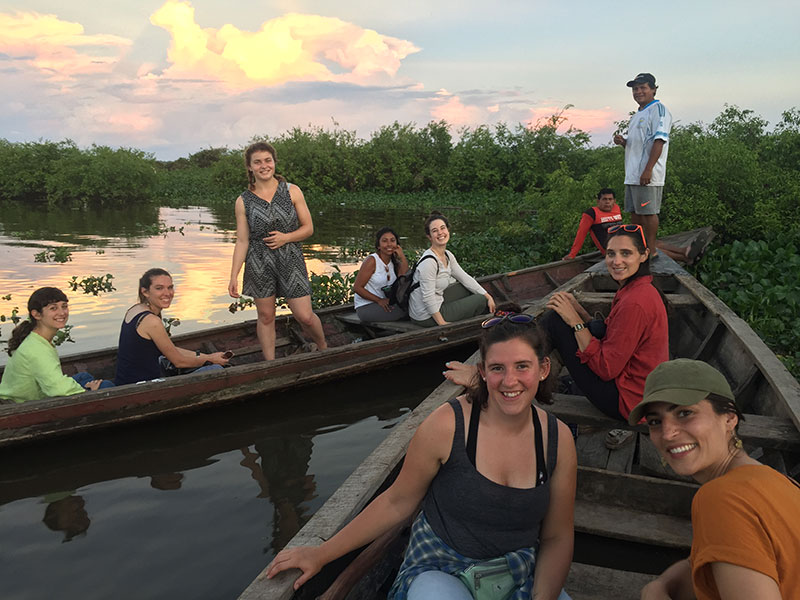
I have seen an interest in students over the years in seeking out public health aspects of design, and I have students who are very interested in these larger issues like climate change, species loss, zoonotic diseases and global health. I think young students are much more aware than I was when I came into the profession of the interconnectivity of the world, especially with animals and plants. Communication modes have allowed younger and younger students to explore complex topics in ways that are very digestible to them. As scientists get better at explaining their ideas, this all becomes easier for the everyday person to digest. There’s definitely a movement.
Do you have any words of advice or encouragement to offer our readers?
I would encourage everyone to increase your intentionality and collaborate with others who might be able to add value to your project. It is not, you know, embracing the fact that this is as additional work. This is another value that’s added. This is, you know, if you think about it, in terms of marketing, or in performance, landscaped performance, or in your contribution to the world, or contribution to our species, or however you want to frame the way that you’re thinking of that. Having this knowledge being layered makes your projects better. It doesn’t have to be more work. So that’s the other thing that often holds folks back is that, you know, you might have the intention, but your clients, or the budget that you have doesn’t allow for that. And it’s about finding creative ways to take the practices that you’re already doing, and just layer this information in, and it eventually, there’s a learning curve that happens, and eventually, it’ll just become common practice.
